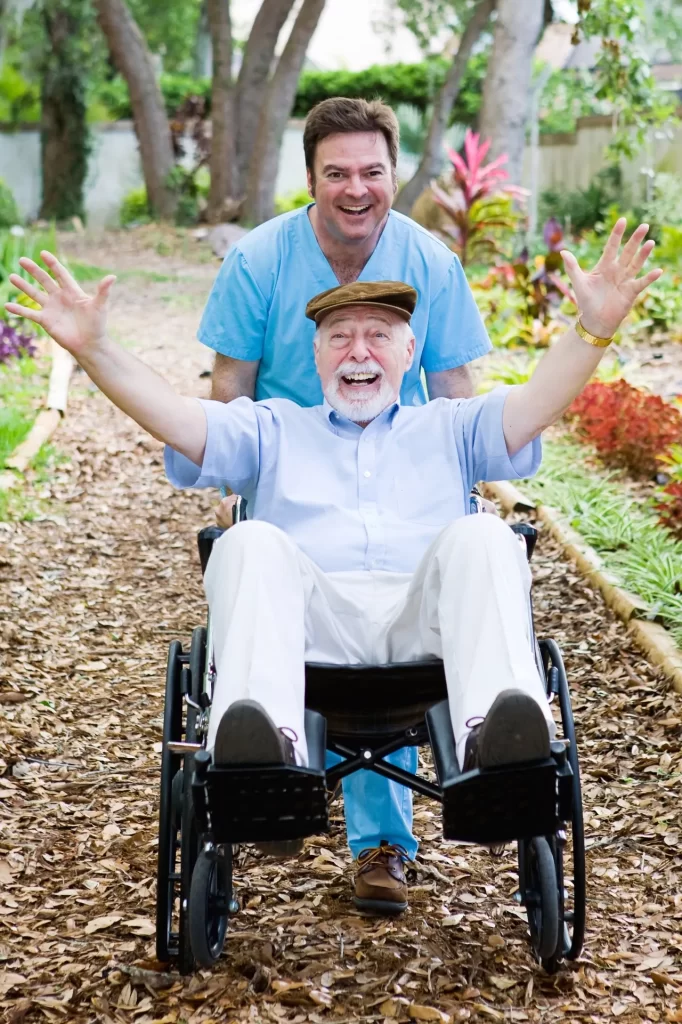Sharp Home Care Blog
8 WAYS TO INTRODUCE IN-HOME CARE TO SENIORS WHEN THEY SAY “NO!”

What can you do if your loved one refuses to let a stranger in the home to help?
First scenario: Your older adult is depressed, lonely, and sedentary. He’s not taking his meds properly, and both he and his home need a cleanup. You worry about his safety and health. Is he eating properly? What if he falls? Worry…. You need peace of mind that he’s taken care of.
Second scenario: You are the caregiver of a parent or spouse, and you desperately need regular breaks to relax and rejuvenate.
However, your parent or spouse absolutely refuses to have an in-home caregiver … a stranger in the home to help. He sees it as a waste of money, an insult to his abilities, or an invasion of privacy.
Seniors often won’t or can’t face the fact that they need help, even if they’re struggling with everyday tasks. In-home care can be a sensitive subject that leads to arguments or an immediate shutdown when you bring it up.
What can you do?
You can overcome this challenge and make in-home care for seniors more acceptable – even if your older adult initially said no. You can help to make the transition easier.
Here’s how:
8 ways to ease into in-
home care for seniors
1. Start slowly and allow time for them to get used to the idea
Your older adult might need time to adjust to the idea of having someone in their house.
To ease the transition, start off slowly. At first, have the aide only come a few hours each week and focus on less personal tasks.
Then, add hours and additional tasks as your older adult becomes more comfortable with the idea and that person.
2. Listen to your older adult’s fears and reasons they don’t want in-home care
Instead of shutting down objections right away, let your older adult express their feelings.
They’re more likely to cooperate when they’ve been heard and know that their opinion matters.
Understanding their concerns also helps you address those fears. Even better, involve them in the hiring process so they can help choose the person who will be caring for them.
3. Help them retain dignity by saying it’s for you, not them
If you present the idea of in-home care as something that helps you rather than them, seniors might be more receptive.
That way they’re less likely to feel that they’re losing independence or aren’t capable.
4. Use the doctor’s authority and say that it’s a prescribed service
Many older adults respect authority figures like doctors and may be more willing to accept home care if they think the doctor has prescribed it.
Tell them that’s what the doctor said, create a fake “prescription,” or ask the doctor’s office for an “official” note on their stationery – whatever works best.
5. Use housekeeping needs as an excuse
Pretending that you need help with housekeeping and other chores is another way to ease an in-home caregiver into the house.
That makes it seem like it’s about your needs rather than theirs.
6. Pretend that it’s a free service
If your older adult isn’t directly paying for in-home care, you could pretend that it’s free.
That makes it more likely that they’ll be open to it since they’ll be taking advantage of a free service.
7. Introduce the caregiver as a friend
Another approach is to introduce the in-home caregiver as a friend of yours who needs some company.
That takes away the stigma of needing help and helps them trust the caregiver.
8. Tell them it’s a temporary arrangement
It may be more acceptable to start using in-home care if your older adult thinks it’s only temporary.
Once the in-home caregiver becomes a part of their routine and they adjust to the idea, it’ll be easier to continue using the services.

By Char Sharp With excerpts from articles written by the DailyCaring Editorial Team at Daily Caring.com and from Family Caregiver Alliance. To learn more, read full article.
Images: Depositphotos
Categories
Recent Posts
8 WAYS TO INTRODUCE IN-HOME CARE TO SENIORS WHEN THEY SAY “NO!”

What can you do if your loved one refuses to let a stranger in the home to help?
First scenario: Your older adult is depressed, lonely, and sedentary. He’s not taking his meds properly, and both he and his home need a cleanup. You worry about his safety and health. Is he eating properly? What if he falls? Worry…. You need peace of mind that he’s taken care of.
Second scenario: You are the caregiver of a parent or spouse, and you desperately need regular breaks to relax and rejuvenate.
However, your parent or spouse absolutely refuses to have an in-home caregiver … a stranger in the home to help. He sees it as a waste of money, an insult to his abilities, or an invasion of privacy.
Seniors often won’t or can’t face the fact that they need help, even if they’re struggling with everyday tasks. In-home care can be a sensitive subject that leads to arguments or an immediate shutdown when you bring it up.
What can you do?
You can overcome this challenge and make in-home care for seniors more acceptable – even if your older adult initially said no. You can help to make the transition easier.
Here’s how:
8 ways to ease into in-home care for seniors
1. Start slowly and allow time for them to get used to the idea
Your older adult might need time to adjust to the idea of having someone in their house.
To ease the transition, start off slowly. At first, have the aide only come a few hours each week and focus on less personal tasks.
Then, add hours and additional tasks as your older adult becomes more comfortable with the idea and that person.
2. Listen to your older adult’s fears and reasons they don’t want in-home care
Instead of shutting down objections right away, let your older adult express their feelings.
They’re more likely to cooperate when they’ve been heard and know that their opinion matters.
Understanding their concerns also helps you address those fears. Even better, involve them in the hiring process so they can help choose the person who will be caring for them.
3. Help them retain dignity by saying it’s for you, not them
If you present the idea of in-home care as something that helps you rather than them, seniors might be more receptive.
That way they’re less likely to feel that they’re losing independence or aren’t capable.
4. Use the doctor’s authority and say that it’s a prescribed service
Many older adults respect authority figures like doctors and may be more willing to accept home care if they think the doctor has prescribed it.
Tell them that’s what the doctor said, create a fake “prescription,” or ask the doctor’s office for an “official” note on their stationery – whatever works best.
5. Use housekeeping needs as an excuse
Pretending that you need help with housekeeping and other chores is another way to ease an in-home caregiver into the house.
That makes it seem like it’s about your needs rather than theirs.
6. Pretend that it’s a free service
If your older adult isn’t directly paying for in-home care, you could pretend that it’s free.
That makes it more likely that they’ll be open to it since they’ll be taking advantage of a free service.
7. Introduce the caregiver as a friend
Another approach is to introduce the in-home caregiver as a friend of yours who needs some company.
That takes away the stigma of needing help and helps them trust the caregiver.
8. Tell them it’s a temporary arrangement
It may be more acceptable to start using in-home care if your older adult thinks it’s only temporary.
Once the in-home caregiver becomes a part of their routine and they adjust to the idea, it’ll be easier to continue using the services.

By Char Sharp With excerpts from articles written by the DailyCaring Editorial Team at Daily Caring.com and from Family Caregiver Alliance. To learn more, read full article.
Images: Depositphotos



